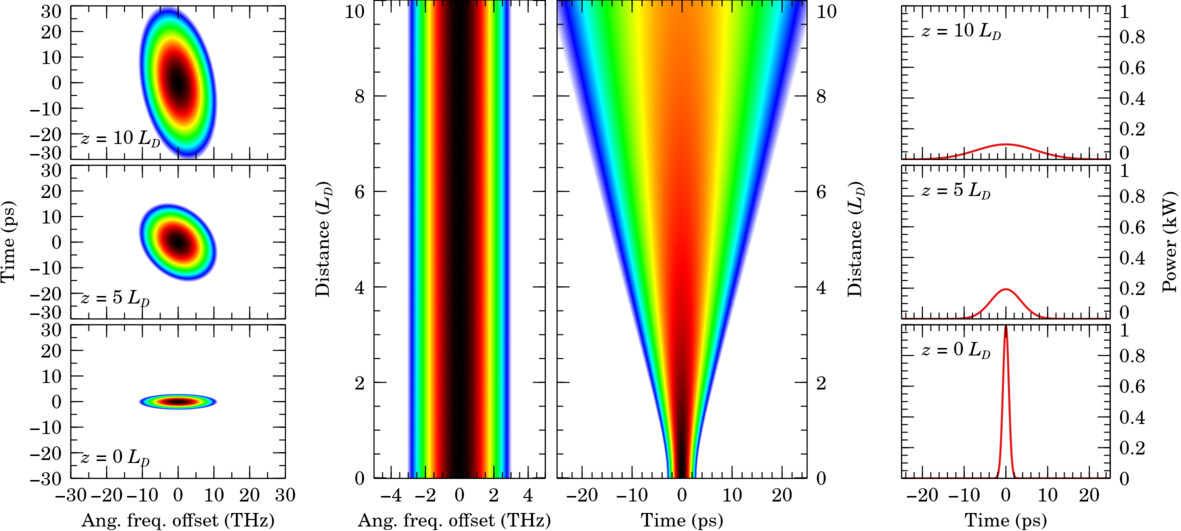Categories: Fiber optics, Optics, Physics.
Dispersive broadening
In optical fibers, dispersive broadening is a linear effect where group velocity dispersion (GVD) “smears out” a pulse in the time domain due to the different group velocities of its frequencies, since pulses always have a nonzero width in the -domain. No new frequencies are created.
A pulse envelope inside a fiber must obey the nonlinear Schrödinger equation, where the parameters and respectively control dispersion and nonlinearity:
We set to ignore all nonlinear effects, and consider a Gaussian initial condition:
By Fourier transforming in , the full analytical solution is found to be as follows, where it can be seen that the amplitude decreases and the width increases with :
To quantify the strength of dispersive effects, we define the dispersion length as the distance over which the half-width at of maximum power (initially ) increases by a factor of :
This phenomenon is illustrated below for our example of a Gaussian pulse with parameter values , , and :
The instantaneous frequency , which describes the dominant angular frequency at a given point in the time domain, is found to be as follows for the Gaussian pulse, where is the phase of :
This expression is linear in time, and depending on the sign of , frequencies on one side of the pulse arrive first, and those on the other side arrive last. The effect is stronger for smaller : this makes sense, since shorter pulses are spectrally wider.
The interaction between dispersion and self-phase modulation leads to many interesting effects, such as modulational instability and optical wave breaking. Of great importance is the sign of : in the anomalous dispersion regime (), lower frequencies travel more slowly than higher ones, and vice versa in the normal dispersion regime ().
References
- O. Bang, Numerical methods in photonics: lecture notes, 2019, unpublished.
